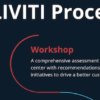Digital transformation can be a huge win for organizations when executed correctly. For example, Contact Center as a Service (CCaaS) solutions give an unprecedented degree of flexibility. This flexibility includes the ability for staff to work remotely, decommission high-support legacy customer contact center technology, multiple payment options based on usage, and big cost savings.
Companies can inadvertently sabotage CCaaS implementations at the selection or RFP stage. When problems start that early in the process, there are ripple effects that impact all elements of the deployment. As a result, when the company CIO or CTO needs to show cost savings and the competitive advantage gained by CCaaS implementation, it’s not there.
If it isn’t the possibility of lacking cost savings then it can be a goal that remains a long way in the future. Or— worst of all—the CCaaS solution has been deployed in production, but users are avoiding it because the system missed the mark.
Pain Points of the CIO: Cut Costs with a Cloud Based Call Center
That’s not good enough.
The key to avoiding these scenarios is beginning the digital transformation project with a holistic selection process. Vendors bidding on an RFP that has incomplete requirements or is full of assumptions are going to deliver a solution tailored to that RFP. If the requirements are lacking, the solution will reflect that.
When companies rely solely on their own resources to gather and document requirements, assumptions and preferences can creep in. Stakeholders can have more sway in the process than others, while some might find themselves left out of the process altogether. Bringing in a third party experienced in capturing requirements allows for a holistic RFP.
Part of the holistic selection process is setting realistic goals with realistic timelines. This could mean documenting—and getting buy-in from corporate stakeholders—on what the CCaaS solutions are expected to achieve within year one. Or, this could mean long-term plans like what is expected in year two, or even what is expected five years out. Organizations must clearly identify milestones and target dates, so there’s a way to measure progress.
Why CCaaS Implementations Fails
Digital transformation doesn’t happen at the flip of a switch. Clearly setting expectations prevents the C-suite and stakeholders from ganging up on CCaaS solutions if it doesn’t accomplish “everything” on day one. Having this buy-in can take the pressure off the implementation team. The implementation team can then avoid taking shortcuts or reacting to last-minute changes.
How do companies go about preparing a holistic RFP and then getting the buy-in from their C-suite for a CCaaS implementation?
The most effective method is to look outside of the company itself and outside of the CCaaS vendors. Look to partner with a trusted advisor instead. Trusted advisors work closely with cloud service vendors. They are intimately familiar with vendor products and capabilities.
ACLIVITI develops long-term change management initiatives transforming contact centers into innovative profit centers.
Contact Us To Gain Company Buy-In With CCaaS Implementation and Start the RFP Process












